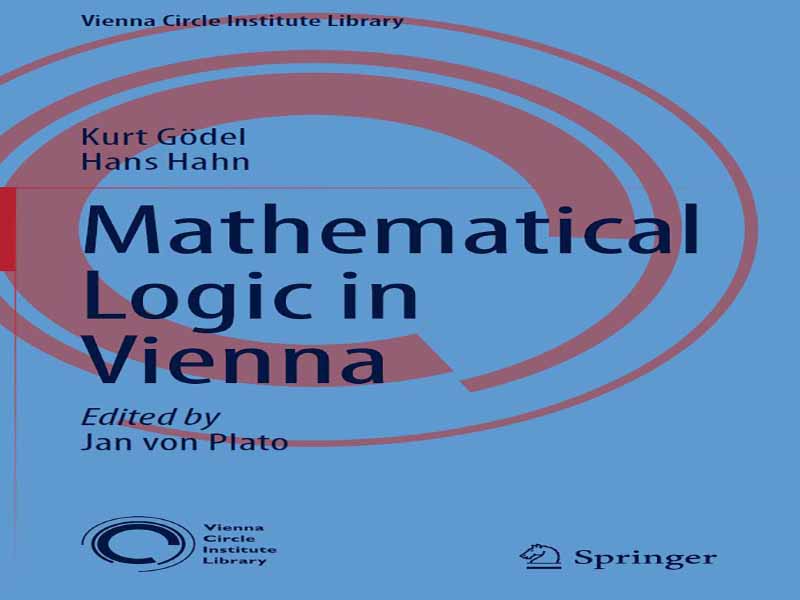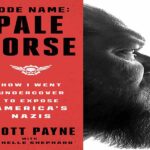- عنوان کتاب: Mathematical Logic in Vienna
- نویسنده: Kurt Gödel
- حوزه: منطق ریاضی
- سال انتشار: 2024
- تعداد صفحه: 171
- زبان اصلی: انگلیسی
- نوع فایل: pdf
- حجم فایل: 5.21 مگابایت
تولد دوباره منطق به صورتی که امروز می شناسیم با گوتلوب فرگه، جوزپه پیانو و برتراند راسل آغاز می شود و این دوره اولیه در کتاب عظیم Principia Mathematica خلاصه می شود که راسل با کمک آلفرد وایتهد نوشت. این کتاب در سه جلد در سالهای 13-1910 منتشر شد، با ویرایش دوم بدون تغییر در سالهای 27-1925، به جز پیشگفتار جدید. پرینسیپیا نقطه شروع Tractatus Logico-Philosophicus ویتگنشتاین بود، حجمی جذاب و حتی رمزآلود و در مقابل باریک، که در حدود سال 1925 الهام بخش فیلسوفان و ریاضیدانان وینی برای مقابله با منطق جدید بود. مهمترین آنها موریتز شلیک فیلسوف و هانس هان ریاضیدان و از سال 1926 به بعد پریاتدوزنت تازه منصوب شده در فلسفه رودولف کارنپ بودند که به جای ویتگنشتاین به پرنسیپیا تکیه داشت. این اولین سالهای علاقه به منطق مدرن در وین هیچ نتیجهای را به همراه نداشت که امروز به یادگار بماند. وضعیت در چند سال 1929-1931 با قضایای معروف کامل بودن و ناقص بودن کورت گودل به طرز چشمگیری تغییر کرد. گودل که عملاً تنها یکی از وینیهای این دوران بود که نتایج جدیدی به همراه داشت، تاریخ این زمانها عمدتاً یکی از کارهای گودل است: به نظر میرسد که اولین سال تحصیل گودل در دانشگاه وین، 1924–1925، شامل دورهای با عنوان Principia Mathematica بود که بعداً توسط هان تحت نظر دکتری او ارائه شد. یکی از یادداشتهای اولیه Godel حاوی یادداشتهایی است که به نظر میرسد از این دوره نشات میگیرد، بسیاری از آنها استناد به پاراگرافها به زبان انگلیسی است.1 گودل برای دومین بار در ارتباط با سمیناری به کارگردانی شلیک در سالهای 1925-1926، که به معرفی راسل در مقدمهای بر ریاضیات توسط راسل، فیلوسون 199، گزارش شده توسط فیلوسون 19، با عنوان 1919 از ریاضیات، با منطق و تحقیقات بنیادی مواجه شد. بیوگرافی قطعی گودل. کتاب راسل در سال 1923 با عنوان Einf ¨uhrung in die matheatische Philosophie به آلمانی ترجمه شد. در سال 1926، گودل همچنین شروع به شرکت در جلسات حلقه وین، ابتکار استاد ریاضیات خود هان کرد. به نظر میرسد مشارکت مستقیم و فعال گودل با پرسشهای اساسی در ماه می 1928 آغاز شده است که ظاهراً از سخنرانیهای معروف ال. بروور در وین چند ماه قبل الهام گرفته شده است. گودل از 8 مه به بعد به همراه نزدیکترین دوستانش هربرت فیگل و مارسل نتکین در «Axiomatik-U¨ bungen» رودولف کارنپ شرکت کرد. این را یادداشت های روزانه کارنپ در 8 و 15 مه نشان می دهد: “تمرینات (Boltzmanngasse). با Natkin، Feigl، G¨odel در کافه. در مورد علیت.» خاطرات کارنپ نشان می دهد که فیگل و نتکین سال قبل در “Logistik-U¨ bungen” او شرکت کرده بودند، اما گودل ظاهراً نه. کارناپ، در آن زمان، دانشجوی خصوصی فلسفه در دانشگاه وین بود و بر دستنوشته کتاب خود Abriss der Logistik (طرح کلی تدارکات) تمرکز داشت، همانطور که یادداشتهای روزانهاش نشان میدهد. «Logistik-U¨ bungen» مطابق با آن چیزی است که اولین بخش از کتاب کارنپ بود که در سال 1929 منتشر شد. «Axiomatik-U¨ bungen» که گودل دنبال کرد، قسمت دوم و پایانی کتاب کوچک کارنپ بود که به عنوان مقدمه ای مختصر بر منطق Principia بود.
The rebirth of logic as we know it today begins with Gottlob Frege, Giuseppe Peano, and Bertrand Russell, with this early period summarized in the massive Principia Mathematica that Russell wrote with the help of Alfred Whitehead. It was published in three volumes in 1910–13, with an unchanged second edition in 1925–27, save for a new preface. Principia was the starting point of Wittgenstein’s Tractatus Logico- Philosophicus, an intriguing, even cryptic volume and slim in contrast, that around 1925 inspired Viennese philosophers and mathematicians to tackle the new logic. Foremost among these were the philosopher Moritz Schlick and the mathematician Hans Hahn and, from 1926 on, the newly appointed Privatdozent in philosophy Rudolf Carnap who leaned on the Principia rather than Wittgenstein. These first years of interest in modern logic in Vienna did not produce any results that would be remembered today. The situation was dramatically changed in a couple of years, 1929–31, with Kurt G¨odel’s famous completeness and incompleteness theorems. G¨odel being the practically only one of the Viennese of these times who produced new results, the history of these times is mainly one of G¨odel’s doings: It appears that G¨odel’s first year of study at the University of Vienna, 1924–25, included a course titled Principia Mathematica, given by Hahn under whose guidance he later did his doctoral work. An early notebook of G¨odel’s contains notes that seem to stem from this course, many of them citations of paragraphs in English.1 G¨odel encountered logic and foundational research a second time in connection with a seminar directed by Schlick in 1925–26, devoted to Russell’s Introduction to Mathematical Philosophy of 1919, as reported by John Dawson’s definitive biography of G¨odel. Russell’s book had been translated into German in 1923, with the title Einf ¨uhrung in die mathematische Philosophie. In 1926, G¨odel also began to attend the meetings of the Vienna Circle, an initiative of his mathematics professor Hahn. G¨odel’s direct, active involvement with foundational questions appears to have begun about May 1928, seemingly inspired by L. Brouwer’s well-known lectures in Vienna a couple of months earlier. Go¨del took part in Rudolf Carnap’s “Axiomatik-U¨ bungen” from May 8 on, together with his closest friends Herbert Feigl and Marcel Natkin. This is shown by Carnap’s diary remarks of 8 and 15 May: “Exercises (Boltzmanngasse). With Natkin, Feigl, G¨odel in caf´e; about causality.” Carnap’s diaries show that Feigl and Natkin had participated in his “Logistik-U¨ bungen” the year before, but Go¨del apparently not. Carnap, at that time, was a Privatdozent of philosophy at the University of Vienna, concentrating on his book manuscript Abriss der Logistik (Outline of logistic), as his diary remarks show. The “Logistik- U¨ bungen” correspond to what became the first part of Carnap’s book that got published in 1929. The “Axiomatik-U¨ bungen” that G¨odel followed were the second and closing part of Carnap’s little book that was meant as a concise introduction to the logic of the Principia.
این کتاب را میتوانید از لینک زیر بصورت رایگان دانلود کنید:
Download: Mathematical Logic in Vienna




































نظرات کاربران